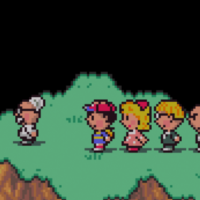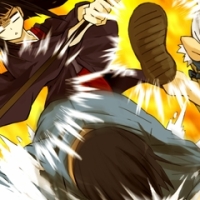
Box art is one of the most important – and perhaps most under-appreciated – aspects of video game presentation. Traditionally, box art has always served a number of irreplaceable functions to both consumers and publishers; it creates the crucial first impression of a game (despite what they say about judging a book by its cover – this rule has a tendency to not apply with certain games…), historically acting as potentially the only image to convey the game’s themes without actually playing it first. It serves to give a game shelf presence, at times being the all-important factor in whether or not a game will sink or swim amongst hundreds of competitors. Then comes the display aspect – whether you’re complete-in-box collector or simply want to enjoy the games themselves, it’s undeniable that few things come close to the pleasure of a well-designed cover.
Nintendo’s Super Famicom is notable for its vast array of beautifully designed cover art, both for the hardware and the games themselves – something which noticeably was lost in translation western SNES packaging. With this in mind, Stu Brett (AKA Super Famicom Guy – clearly his affinity for the 16-bit system runs deep) worked to compile a physical book showcasing some of the greatest artwork the console’s library has to offer. Brett is the proprietor of a huge personal collection of Super Famicom games, which served as the basis for this book when its original Kickstarter campaign was launched in September 2014, but snags with copyright and timing cut the original project short.
Luckily, specialist retro gaming book publishers Bitmap Books were on hand to take over publishing duties, helping to make this labour of Super Famicom-love a reality, as well as using their publishing prowess to help put together an even more comprehensive package. The concept of the book is simple; 276 pages of words, pictures and more compiling the best Super Famicom cover art around, and exactly what makes it so special.
The book’s clean-cut, simple yet refined presentation style puts the focus on the artwork itself, and rightly so – the quality of the box photography is stellar, allowing you to appreciate the graphic design of each piece of packaging at its original scale. Seeing a photograph of the game boxes themselves as opposed to straight scans or box art images helps to give each design a sense of depth and context, allowing you to appreciate their form as a physical item, a nice emphasis on one of the most desirable aspects of good game packaging design.
Each box art image is accompanied by a brief description of a number of aspects relating to the titles and their packaging, including details about the games themselves, as well as the regional changes their cover art underwent. With the selection of titles included in the book, ranging from beloved Nintendo classics like Super Mario World and The Legend of Zelda: A Link to the Past to games that likely few have heard of or played, such as Kinnikuman: Dirty Challenger and Motoko-chan no Wonder Kitchen, this is a much appreciated touch that will likely prove to be a great asset to those looking to scout out potential hidden gems to add to their collections.
Along with the game-related texts themselves are a number of forewords and short essays from a variety of sources, notably Masaaki Enami, owner of EDITMODE and THE KING OF GAMES. These provide some nice insight into the personal importance of the Super Famicom to people of all walks of life, as well the significance of Japanese box art in the west, especially in the UK where lengthy delays between releases led to many importing to get their 16-bit fix. If you’re a long-time fan of the system, you’ll likely find that you’ll be able to associate with some of the stories told on a personal level, but even for those who weren’t gaming in the late 90s, they provide a charming human context to the book as a whole.
Super Famicom: The Box Art Collection delivers on its promise very well – it compiles some gorgeous artwork, beloved by some but undiscovered by many, into a sublimely presented and concise book that is more than worthy of a spot on the coffee table or shelf of any Super Famicom fan. Whether you’re looking to learn more about the Super Famicom’s diverse library, or simply want to take in a sample of the system’s finest box art offerings, this book brings it all together in a package that’s hard to resist.
Super Famicom: The Box Art Collection can be purchased directly from Bitmap Books.



























Pingback: Minus World Reading List – September 2016 | Minus World